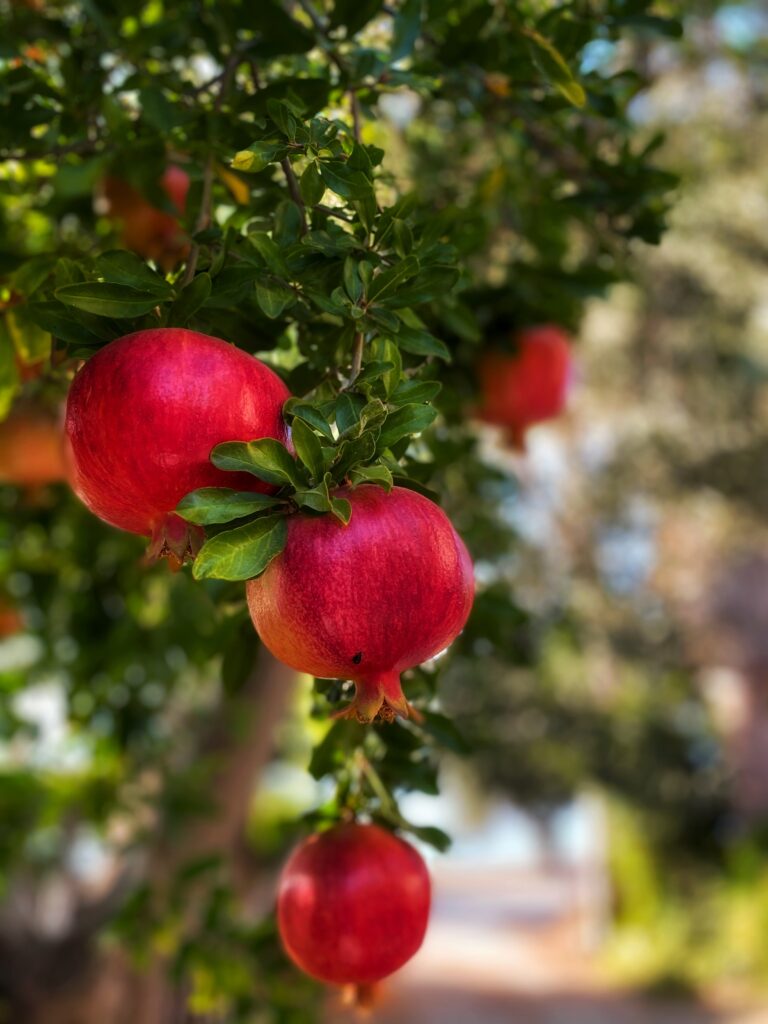
25 Aug Growing Fruit Trees Part Two
Continuing on from the last month’s Garden Greetings Newsletter on growing fruit trees, I have focused on three somewhat unusual fruits here in this month’s issue.
Avocado
They make gorgeous evergreen trees but you will need the space to accommodate them. Ideally they will need a sheltered sunny location with deep, organic soils with a soil pH of 5 – 6. Avocados will need full protection from frost in the first few years however once established they will tolerate frost. Here in the Hilltops region you will need to plant varieties that can tolerate more cold than others. Another consideration is that whilst they do self pollinate you will have more fruit if you plant two trees in the one area. Each of these will need to be an A and B Type. All Avocados are categorised into an A and B Types, this refers to their flowering times. Avocado flowers botanically speaking are “bisexual” which means they have both male and female reproductive organs. The trees are classed as an A or B type depending on when each of the flower types open.
For example – Type A, Avocado will have flowers that open ready for pollination in the morning and then in the afternoon the blossoms will be releasing their pollen to pollinate other flowers. With Type B Avocados the flowers are doing the opposite. Ideally to get good fruit production you need to select 1 out of each group. For the Hilltops region I would recommend the Bacon from the “B” Type and the Hass from the “A” Type.
Their fruit will ripen in late Autumn to early Winter. After harvest you can give the trees a light prune to maintain a vase shape. Avocados like to have a nitrogen rich fertiliser applied each month through the Summer season.


Pomegranate
Pomegranates are beautiful flowering small trees or large shrubs which are deciduous. They love a hot Summer but still need a strong chill in the Winter months. Flowering through the Summer months with their fruit ripening through Autumn. The bright orange to red coloured flowers are a lovely feature of the tree. These develop into the large red fruit that contains hundreds of jewel like beads which are the seeds that you eat or you can juice them. Always ensure that you remove the white pulp from around the seeds as this is quite bitter and not at all enjoyable. In your garden you could grow them as a feature tree or in a pot or even as an informal hedge.
Pomegranates are highly drought resistant however you will get better fruit if they receive some watering especially whilst they are establishing. They enjoy a full sun location with a very well drained soil, with a pH of 5.5 – 7. They naturally grow in rocky gravel like soil in their native Iran and Northern India, so they can cope with poor soils. Pomegranates are self fertile, the pollinating insects will do all the work for you however like with most fruit trees the more flowers (trees) you have, the more fruit you will get. If you have the space try having two plants at least. There are also dwarf cultivars that are well worth investigating.
Persimmon
A deciduous, small to medium sized tree, these fruit trees are beautiful as an ornamental tree with the fruit being an added bonus. The most commonly sold variety “Fuyu” is a non- astringent variety. Always check what type of Persimmon you are purchasing as the astringent varieties will need to ripen a lot more and some are not as appetising as others. The astringency refers to the number of soluble tannins in its flesh, these will directly affect the flavour of the fruit. The non – astringent varieties can be eaten whilst the fruit is still firm whilst the astringent varieties will need to be left to become soft before they are appetising. Persimmons can grow in a variety of soil types however they do like a pH of 6.5 to 7.5. They like a sunny location, they will need good moisture through the warmer months. Here in the Hilltops Region I would recommend planting them with protection from the western sun. You will also need to give them a cool root run whilst they are establishing with reliable moisture. They can be quite slow to grow however it is important whilst the trees are young to give them some formative pruning and training. The astringent varieties are mainly self-fertile, so you will only need one tree for pollination to happen however the non-astringent varieties, are best planted with two trees to ensure you have a good production of fruit. Fruiting normally happen through Autumn into early Winter.



